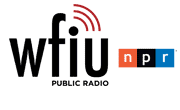
In some ways, wild edibles kind of self-sorts people by their willingness to go out and do it.
Jill Vance takes us on a foraging adventure in this week's podcast. And no, we're not looking for morels. We'll find other wild edibles -- like sorrel, ramps and dandelions -- that love the damp and warm spring weather. She's the interpretive naturalist at Monroe Lake, and one of the wild edibles experts on staff at Indiana's Department of Natural Resources.
Know Before You Forage
Rule number one of foraging for wild edibles, says Vance, is 'Know your plants.'Â It's important to bring identification books with you in the woods to check your plants.
She breaks her books down into three categories:
General Plant Identification Books
- 101 Trees of Indiana: A Field Guide by Marion T. Jackson
- Newcomb's Wildflower Guide by Lawrence Newcomb
Wild Edibles Identification Books
- A Field Guide to Edible Wild Plants: Eastern and Central North America by Lee Allen Peterson
- Wild Food Plants For Indiana & Adjacent States by Alan J. McPherson and Sue A. Clark
Recipe Books For Wild Edibles
- Cooking With Wild Berries & Fruits of Kentucky, Indiana and Ohio by Teresa Marrone
- Edible Wild Foods From Dirt To Plate by John Kallas
One more important step to take before you hike into the woods -- make sure you know the rules of the land on which you want to forage. All it takes is a quick phone call to the land's manager's office.
When you're in the woods, practice sustainable harvesting. A good rule of thumb is pick no more than 10 percent of any one patch. "If you enjoy these things, you should want them to return, and so you should learn how to do that," says Vance.












